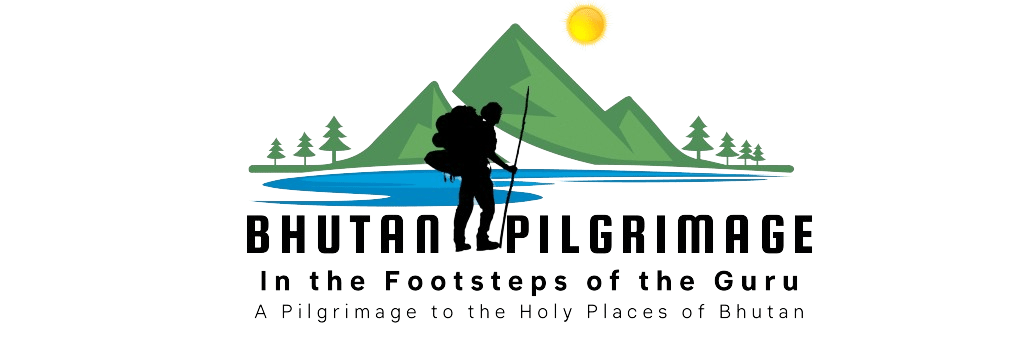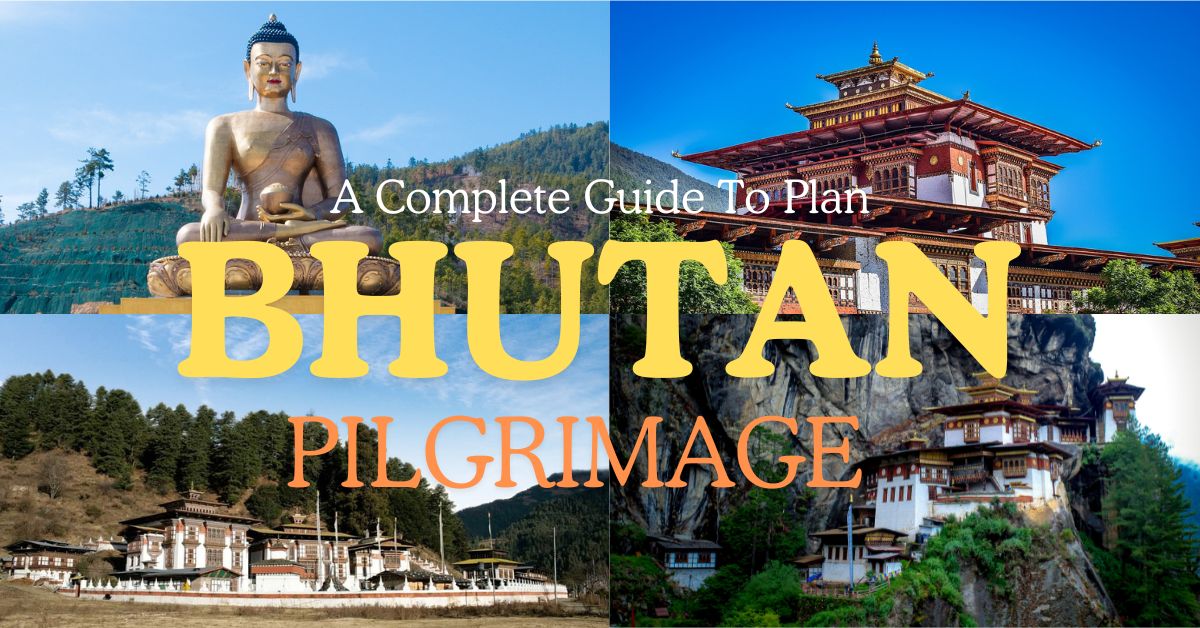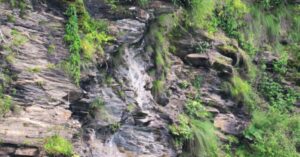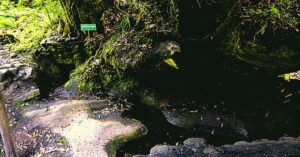Here is a complete travel guide to plan a trip to Bhutan that guarantees your perfect trip –from how to get there to stays, transportation, guidelines, and the best time to visit. I have also covered the districts to visit and how you can travel between them. There is a complete section on the best places to visit in Bhutan. In short, these tips will be the ultimate guide for getting your Bhutan tour plan going!
So, let’s start with a quick introduction and history of Bhutan.
Where is Bhutan?
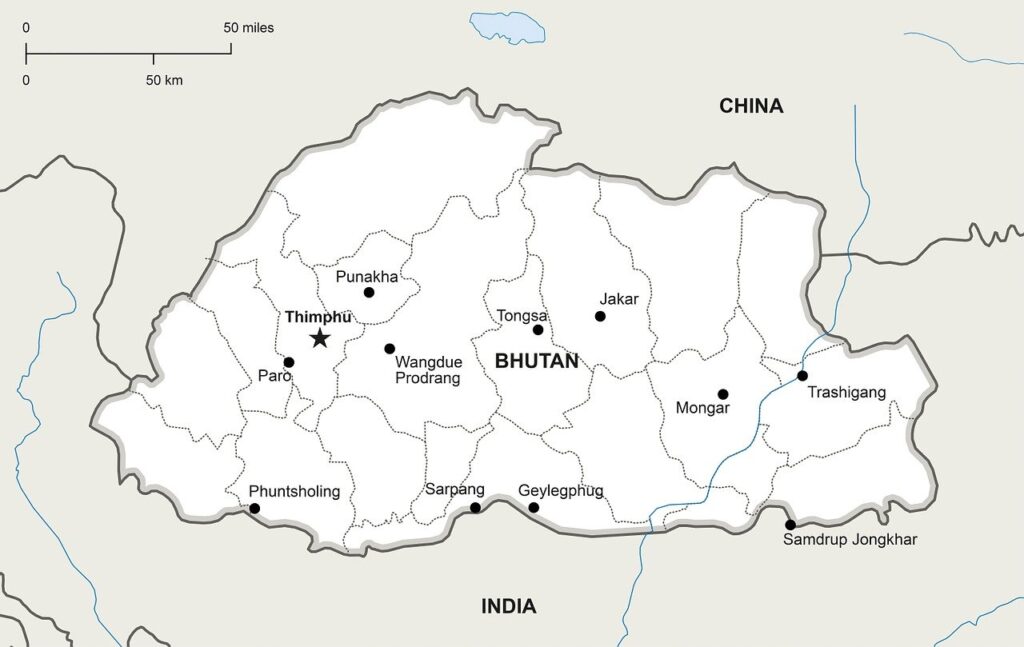
Bhutan is a small, landlocked country in South-Central Asia, nestled in the Eastern Himalayas. It shares borders with India to the south, east, and west and China to the north. The country covers an area of approximately 38,394 square kilometers. It is characterized by its mountainous terrain, with elevations ranging from about 200 meters in the southern foothills to over 7,000 meters in the northern peaks.
Bhutan’s capital city is Thimphu, situated in the western part of the country. Its unique geographical location has significant implications for its culture, economy, and political relations, particularly with its neighboring countries, India and China.
Brief history of Bhutan
Bhutan’s history is rich and complex, characterized by its unique cultural heritage and political evolution.
Early History
The earliest evidence of human settlement in Bhutan dates back to around 2000 BC, with archaeological findings suggesting the presence of stone tools and structures. However, the historical narrative becomes clearer with the introduction of Buddhism in the 7th century AD, when Tibetan King Songtsen Gampo constructed significant temples, marking the religion’s initial spread in the region.
The Rise of Buddhism
Buddhism flourished in Bhutan, particularly with the arrival of Padmasambhava (Guru Rinpoche) in the 8th century, who is credited with establishing the Nyingma school of Buddhism. His influence was profound, leading to the establishment of many important pilgrimage sites across the country, including the iconic Tiger’s Nest monastery.
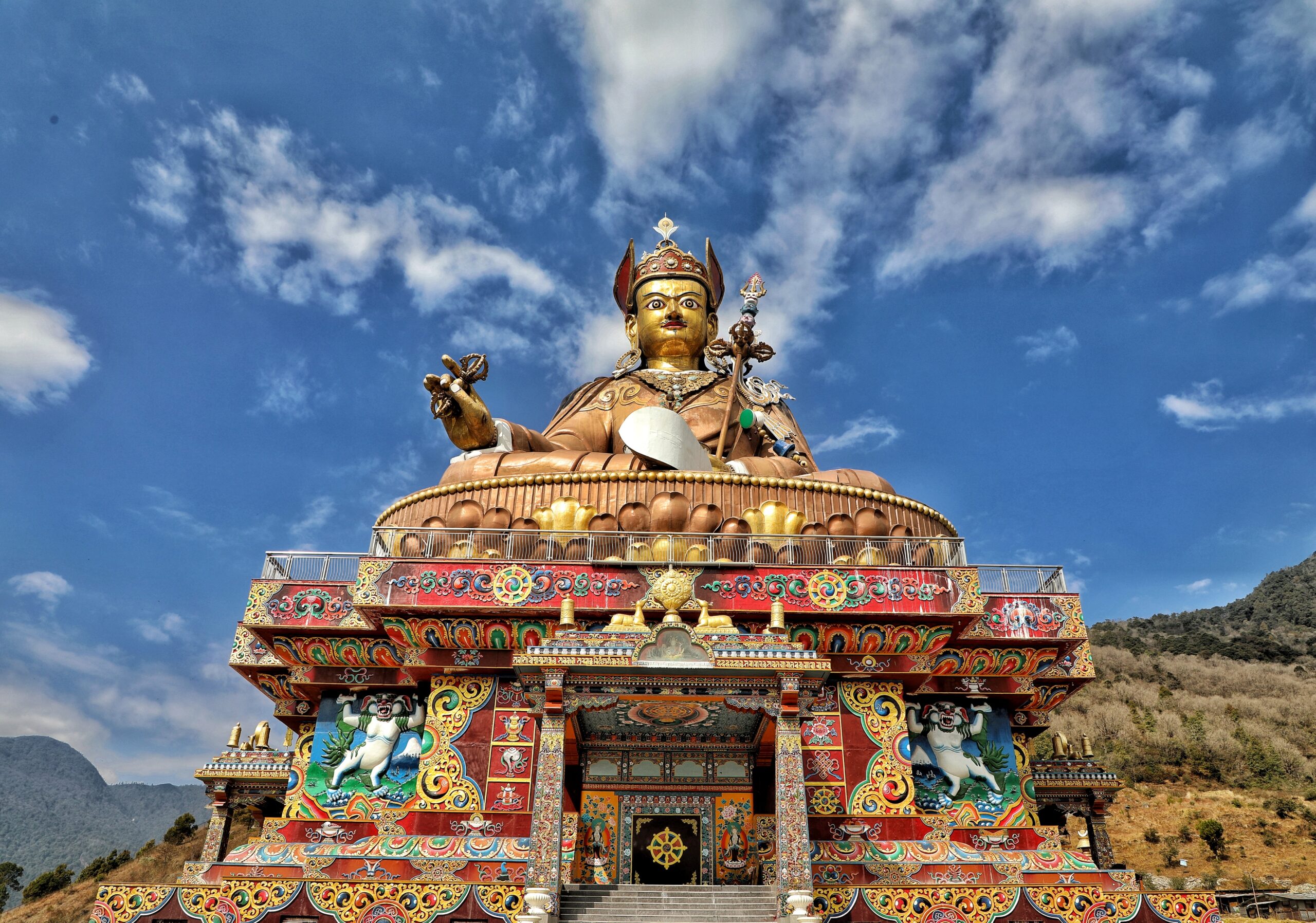
Political Consolidation
The 16th century saw the unification of Bhutan under Zhabdrung Ngawang Namgyal, known as Zhabdrung Rinpoche, who defeated Tibetan invasions and established a dual system of governance combining religious and civil authority. However, his death in 1651 led to internal strife and civil wars, which persisted for over two centuries until Ugyen Wangchuck emerged victorious in the late 19th century, consolidating power and establishing the monarchy in 1907.
Modern Era
In the late 20th century, Bhutan began modernizing with significant education, infrastructure, and governance developments. In 2008 the country transitioned to a constitutional monarchy, allowing for a parliamentary democracy while maintaining its cultural traditions.
Cultural Identity
Bhutan is known for its unique approach to development, encapsulated in the philosophy of Gross National Happiness (GNH), which emphasizes well-being over economic growth. This cultural identity remains a cornerstone of Bhutanese policy and societal values.
Facts about Bhutan
Official Name: Kingdom of Bhutan.
Geography: Bhutan is a landlocked country in the Eastern Himalayas, bordered by China to the north and India to the south. It covers an area of approximately 38,394 square kilometers.
Population: As of recent estimates, Bhutan has a population of about 777,400 people.
Capital: The capital city is Thimphu, which is unique as it is the only capital in the world without traffic lights; policemen manage traffic at intersections.
Language: The official language is Dzongkha.
Government: Bhutan is a constitutional monarchy. The current king is Jigme Khesar Namgyel Wangchuck, who has been in power since 2006. The country transitioned to a parliamentary democracy in 2008.
Culture: Most of the population (approximately 97%) practices Buddhism, significantly influencing Bhutanese culture and traditions. The country is known for its commitment to preserving its cultural heritage.
Economy: Bhutan’s economy is small but growing. Hydroelectricity is its main export, primarily sold to India. The currency is the Ngultrum, which is pegged to the Indian rupee.
Environmental Commitment: Bhutan is recognized as the only carbon-negative country in the world, with over 70% of its land covered by forests. The constitution mandates that at least 60% of the country remain forested.
Wildlife: Bhutan is home to a diverse range of flora and fauna, including over 5,500 species of plants and 165 species of mammals. The black-necked crane is considered a culturally sacred bird.
Unique Traditions: Bhutanese culture includes unique practices such as the traditional refusal of food when offered and the national dish, ema datshi, a chili cheese stew.
Tips to plan a Pilgrimage to Bhutan
What is the best way to reach Bhutan?
Travelers have several options to reach Bhutan, primarily air travel and overland routes from India. Here’s a detailed overview of the best ways to access the unique Himalayan kingdom of Bhutan:
By Air
The most convenient way to enter Bhutan is by flying into Paro International Airport, the only international airport in the country. This airport is well-connected with direct flights from a few countries and several cities:
India: Druk Air and Bhutan Airlines operate regular flights from major cities such as New Delhi, Kolkata, Guwahati, Bagdogra, and Bodh Gaya.
Other Countries: Direct flights also come from Kathmandu (Nepal), Dhaka (Bangladesh), Bangkok (Thailand), and Singapore. Starting on 20th October 2024, Drukair will launch twice-weekly flights to Dubai, a major city in the United Arab Emirates (UAE). Bhutan Airlines will operate 10 round-trip flights throughout the year, providing a seamless and direct travel option between Vietnam and Bhutan starting in 2025.
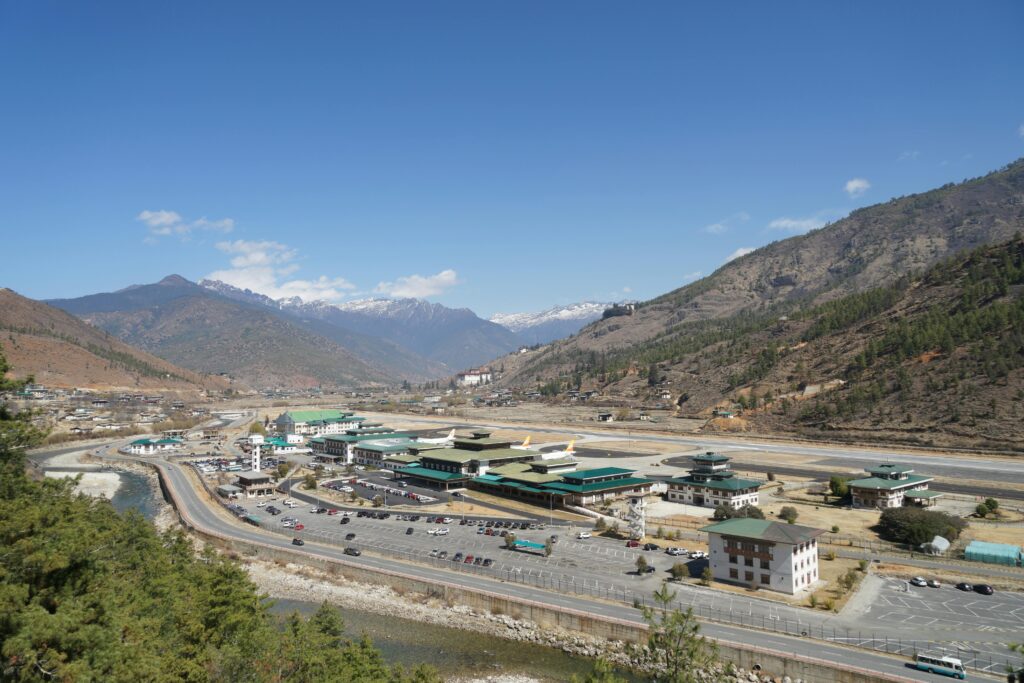
By Road
Travelers can also reach Bhutan by road, primarily through three official entry points:
1. Phuentsholing: This is the most popular entry point at the West Bengal, India border. It is approximately 145 km from Thimphu, Bhutan’s capital. The journey from Bagdogra, the nearest Indian airport to Phuentsholing takes around 4 hours.
2. Samdrup Jongkhar: This entry point is located along the Assam border and is a good option if you travel from Guwahati, about a 3-hour drive away.
3. Gelephu: Located in south-central Bhutan, this entry point is about 250 km from Thimphu.
By Train
While there are no direct train services to Bhutan, travelers can take a train to nearby Indian stations such as Siliguri, New Jalpaiguri, or Hasimara. Taxis or buses can be hired from these stations to reach Phuentsholing, the closest border town.
What is the best time to visit Bhutan?
The best time to visit Bhutan is during the spring (March to May) and autumn (September to November) seasons. These periods are characterized by pleasant weather, clear skies, and vibrant landscapes, making them ideal for sightseeing and trekking.
Spring (March to May)
Weather: Temperatures are mild, with blooming rhododendrons and other wildflowers creating stunning scenery.
Activities: This is a popular time for trekking and experiencing local festivals, such as the Paro Tshechu in March or April.
Crowds: While it can be busy, the influx of tourists is manageable compared to the peak autumn season.
Autumn (September to November)
Weather: The weather is dry and bright, with cooler temperatures as winter approaches. October is particularly noted for its clear skies and is often considered the best month to visit.
Activities: This season also features several vibrant festivals, including the Thimphu Tshechu in September, attracting many visitors.
Crowds: October is the most popular month for international visitors, so expect larger crowds at major attractions.
Other Seasons
Winter (December to February): While cold, this season offers stunning views of snow-capped mountains. It is less crowded, but temperatures can drop below freezing, especially at night. It’s time to experience snowfalls in Bhutan.
Monsoon (June to August): This period is best avoided due to heavy rainfall, which can lead to landslides and travel disruptions. However, some travelers enjoy the lush greenery and fewer crowds during this time.
Bhutan travel guidelines and permits
When traveling to Bhutan, obtaining a visa in advance, paying the sustainable development fee, and being aware of customs and currency regulations is essential. Tour operators can assist with arranging visas and permits and navigating entry and exit requirements.
Visa and Permit Requirements
- All international visitors, except for nationals of India, Bangladesh, and the Maldives, require a visa to enter Bhutan.
- Visas must be obtained in advance through a registered Bhutanese tour operator or directly through the Department of Immigration’s website.
- A non-refundable visa application fee of 40 US dollars is payable.
- Visitors traveling for business or non-tourism reasons must arrange their visa through a sponsoring organization in Bhutan.
- Permits are required to travel to some states in Bhutan, which can be arranged through your tour guide.
Sustainable Development Fee
- All visitors must pay a daily sustainable development fee (SDF) of 100 US dollars per night (per adult; concessionary rates apply for children). For Indians, the SDF is NU 1200 per person per night.
Entry and Exit Points
- Visitors can enter or exit Bhutan via air through Paro International Airport, or via land entry points in Phuentsholing, Gelephu, or Samdrup Jongkhar.
- Indian citizens can enter Bhutan through the land borders with India at Phuentsholing, Gelephu, or Samdrup Jongkhar.
Customs Rules
- There are strict rules about goods you can take into or out of Bhutan. You must declare anything prohibited or subject to tax or duty.
- It is illegal to export antiques. Customs officials may inspect items that appear to be antiques.
- You can bring a small supply of tobacco for personal use but must pay taxes and duties and be able to show proof of payments if asked.
Taking Money into or out of Bhutan
- You can take up to 30,000 Bhutan ngultrum into or out of Bhutan.
- If you plan to take foreign currency worth 10,000 US dollars or more into or out of Bhutan, you must declare it and get clearance from the Royal Monetary Authority of Bhutan.
- Indian rupees are widely accepted in Bhutan.
Where to stay in Bhutan? (Hotels in Bhutan)
Several luxury accommodations in Bhutan provide comfortable stays while allowing you to experience the country’s beauty and culture without overspending. However, you can also opt for affordable accommodations that blend comfort, stunning views, and exceptional services, making them ideal for a memorable stay.
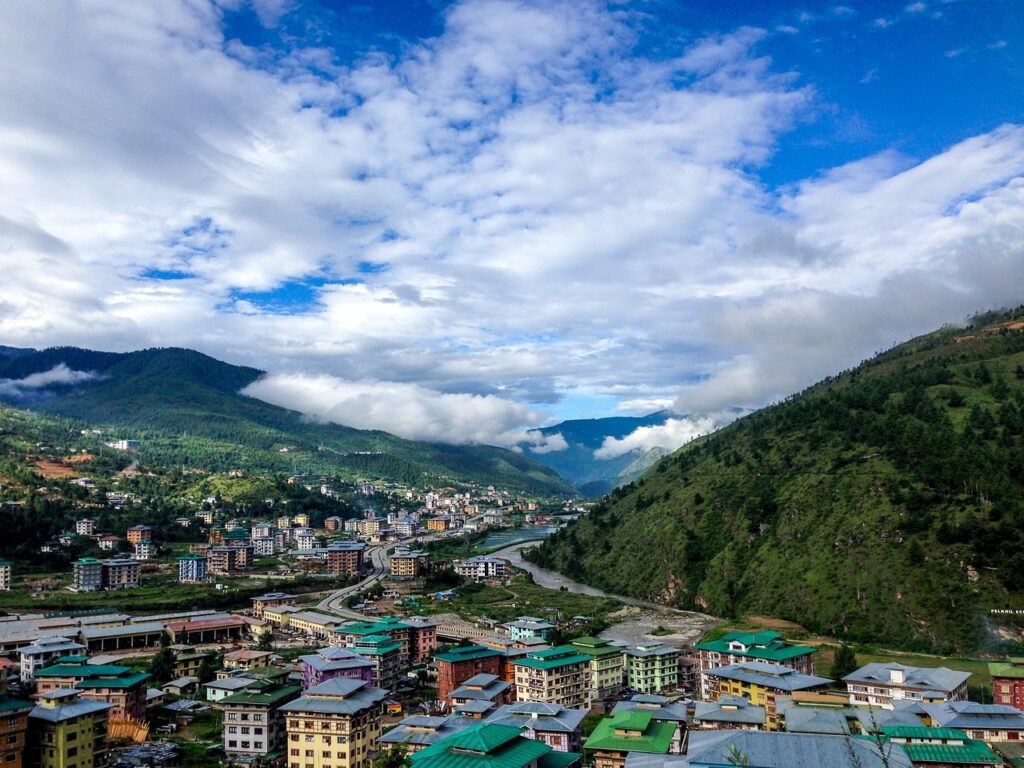
How to go around in Bhutan? (Conveyance and transport)
Here’s a comprehensive guide on how to get around in Bhutan using various modes of transportation:
Private Transportation
- Private Cars and Drivers: Renting a car with a driver is the most convenient and flexible option for traveling between districts. Drivers are knowledgeable about local roads and can accommodate your itinerary. This is the preferred choice for most tourists.
- Taxis: Taxis are readily available in urban areas for short-distance travel within cities. Fares are negotiable, and it is recommended that you agree on the price before starting the journey.
- Car Rentals: While available, renting a car for self-driving is not recommended for most tourists due to the challenging road conditions. It’s essential to have a valid license and comply with local regulations.
Public Transportation
- Buses: Buses are the primary mode of public transport, connecting major towns and cities. They are affordable but less reliable. Tourists must be accompanied by a guide when using buses outside Thimphu and Paro.
- Domestic Flights: For longer distances, domestic flights operated by Drukair and Bhutan Airlines can save significant travel time. However, flights are limited and subject to cancellations.
- Shared Taxis and Shuttle Services: These are available on certain routes, providing a cost-effective option for passengers. They operate on fixed schedules.
Other Options
- Cycling and Motorbiking: Guided cycling and motorbiking tours offer an adventurous way to explore Bhutan’s landscapes. Due to the challenging road conditions, this option is suitable for experienced travelers.
- Walking: Many towns are pedestrian-friendly, allowing visitors to explore on foot. In remote areas, traditional modes of transportation like walking or using mule caravans are still prevalent.
What to eat in Bhutan?
Bhutanese cuisine is characterized by its bold flavors, particularly chili and cheese. The dishes reflect the country’s agricultural practices and cultural heritage, making them integral to the Bhutanese experience. When visiting Bhutan, trying these dishes will provide a deeper understanding of the local culture and traditions.
Bhutanese cuisine is a unique blend of flavors and ingredients, heavily influenced by the country’s geography and culture. Here are some must-try dishes when visiting Bhutan:
Staple Dishes
1. Ema Datshi
Often considered the national dish, ema datshi is a spicy stew made with green or red chili peppers and local cheese (datshi). It’s a staple at almost every meal and varies in richness depending on the cheese and butter used.
2. Kewa Datshi
This dish features potatoes cooked with cheese and is similar to scalloped potatoes. It’s typically milder than ema datshi and is a comforting side dish.
3. Shamu Datshi
A variation of kewa datshi, this dish includes mushrooms cooked in cheese. It offers a different texture and flavor profile, making it a popular choice among vegetarian options.
4. Phaksha Paa
It is a flavorful dish of dried pork, chili peppers, and various spices. It can be served as a stew or gravy and is a favorite among meat lovers.
5. Jasha Maru
This spicy chicken dish is prepared with garlic, ginger, and tomatoes, and is typically served with rice. It’s known for its bold flavors and is a must-try for those who enjoy spicy food.
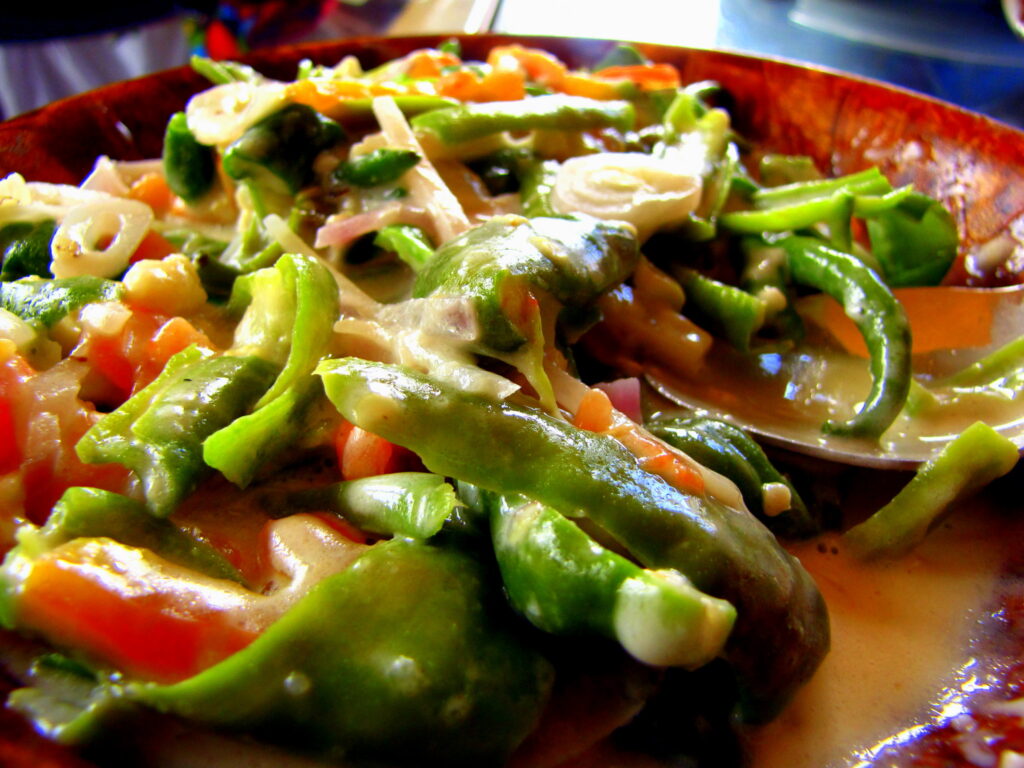
Snacks and Side Dishes
6. Momo
These Bhutanese dumplings can be filled with meat or vegetables and are a popular snack or appetizer. They are often steamed or fried and served with a spicy dipping sauce called ezay.
7. Zow Shungo
A dish made from leftover vegetables mixed with rice, it’s a practical and tasty way to reduce food waste while enjoying a hearty meal.
8. Puta
Buckwheat noodles that can be served stir-fried or in soups. They are a nutritious alternative to rice and are often accompanied by vegetables and meat.
Beverages
9. Suja
This traditional butter tea is made with local tea leaves, salt, and butter. It is a rich and savory drink that is especially popular in colder months.
10. Ara
A locally brewed rice wine, Ara is often enjoyed during celebrations and can vary in strength and flavor. It’s a unique experience for visitors looking to taste local beverages.
Top Restaurants/Cafes in Bhutan
Many restaurants and cafes in Bhutan, particularly Thimphu, provide various dining experiences, allowing you to savor Bhutanese cuisine’s and international cuisines’ unique flavors.
Mobile connectivity and Wi-Fi in Bhutan
While Bhutan is steadily improving its internet infrastructure, travelers should manage expectations regarding internet speed, as the country’s focus on preserving its unique culture and environment has influenced technological development.
Bhutan offers good mobile connectivity and Wi-Fi options for tourists, with the two main telecom providers.
Mobile Connectivity
- Bhutan has 100% mobile network coverage, with Bhutan Telecom and TashiCell providing comprehensive services across all 20 districts and national highways.
- Tourists can easily purchase prepaid SIM cards upon arrival at Paro International Airport or from various outlets in major towns like Thimphu and Paro.
- To get a SIM card, tourists must provide a copy of their passport and complete a simple form. The SIM comes pre-activated with a 1-month 4G data plan.
- Using a local SIM card is recommended as it provides better connectivity than hotel Wi-Fi in most cases.
Wi-Fi Availability
- Wi-Fi is available in urban centers, hotels, restaurants, cafes, and public spaces, particularly in major towns like Thimphu, Paro, and Punakha.
- Many hotels, especially in tourist areas, offer complimentary Wi-Fi to guests.
- The quality and speed of Wi-Fi can vary, with hotel connections generally more reliable than public hotspots.
- Wi-Fi availability is limited in remote and mountainous regions, so travelers should be prepared for potential connectivity challenges.
Paying for various activities in Bhutan
It’s important to note that prices may vary depending on the season, number of travelers, and specific services required. Booking a tour package can simplify planning and provide a more inclusive cost structure.
Here’s a breakdown of the costs for various activities and experiences in Bhutan:
Sustainable Development Fee (SDF)
- $100 per person per night for adults. For Indians, Nu 1200 per person per night for adults.
- $50 per person per night for children aged 6-12. Indian children between 6 and 12 are given a 50 % concession on SDF.
- Free for children below 6 years old. Indian children aged 5 years and below are also exempted from paying SDF.
Entrance Fees
- Most major attractions, such as Tashichho Dzong, Memorial Chorten, and Punakha Dzong, charge an entrance fee of around 500 BTN per person.
- The iconic Tiger’s Nest Monastery has a higher entrance fee of 1,000 BTN per person.
Accommodation
- Accommodation costs vary depending on the type of hotel, ranging from budget options to luxury resorts. Prices can range from $20 to $500 per night.
- Many tour packages include accommodation, so the cost is bundled into the overall package price.
- Tourists are allowed to stay only in 3-star and above hotels in Bhutan.
Food
- If dining out, the average cost per person is around $12, with breakfast being cheaper.
- A cup of cappuccino costs around $1.
- Most tour packages include meals, so food costs are covered.
Other Activities
- Traditional hot stone bath experience: $10-20 per person.
- Punakha white water rafting: $150 per raft accommodating up to 6 passengers.
- Cycling, archery, and other activities can be arranged at an extra cost.
Best Places to Visit in Bhutan
Bhutan has stunning landscapes, rich culture, and vibrant spirituality. These destinations highlight Bhutan’s unique blend of natural beauty, rich culture, and spiritual significance. Each location offers a distinct experience, making Bhutan a captivating destination for travelers seeking adventure, tranquility, and cultural immersion. Here are some of the best places to visit in Bhutan that should be included in your itinerary:
1. Paro
Home to the only international airport in Bhutan, Paro is known for its beautiful landscapes and historical sites. Key attractions include Paro Taktsang, Rinpung Dzong, Kyichu Lhakhang, and the National Museum, which showcases Bhutanese heritage. Here are some of the best places to visit in Paro that should be included in your itinerary:
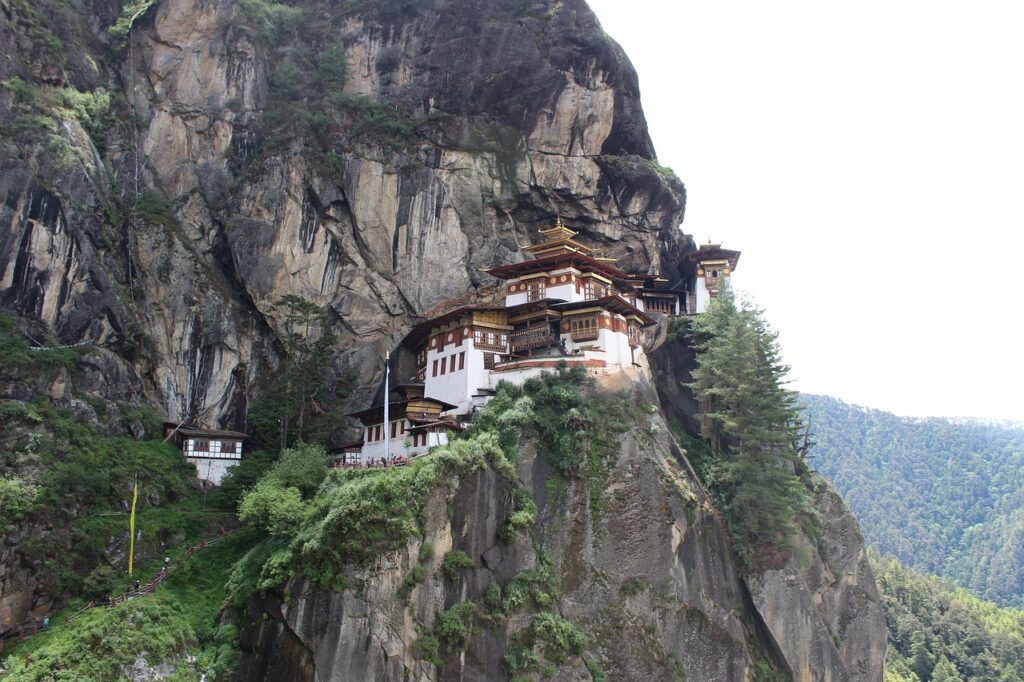
This iconic monastery, perched on a cliff at 3,120 meters, is a must-visit. The hike to the monastery offers breathtaking views of the Paro Valley, and it is a significant spiritual site for Buddhists.
Known as “The Fortress on a Heap of Jewels,” this impressive dzong was built in 1646 and serves as the administrative and religious center of the Paro district. Visitors can explore its beautiful architecture, courtyards, and the monastic community residing within.
This ancient fortress provides a short hike with rewarding panoramic views of the Paro Valley and the surrounding landscape. Visitors can explore the ruins and enjoy the stunning vistas.
- Ta Dzong (National Museum)
Originally a watchtower, Ta Dzong now houses the National Museum of Bhutan, showcasing a rich collection of artifacts, art, and historical exhibits. The museum provides insights into Bhutan’s culture, history, and natural environment.
- Kyichu Lhakhang
One of the oldest temples in Bhutan, Kyichu Lhakhang dates back to the 7th century and is considered a sacred site. The temple is known for its beautiful architecture and serene atmosphere, making it a perfect spot for reflection.
2. Thimphu
As the capital city, Thimphu combines modernity with tradition. Notable sites include the Buddha Dordenma statue, Tashichho Dzong, and the Folk Heritage Museum. The city is also famous for its vibrant markets and nightlife. Here are some of the best places to visit in Thimphu that should be included in your itinerary:
A massive statue of Shakyamuni Buddha stands 51 meters high. This site offers panoramic views of the Thimphu Valley and is a significant pilgrimage site for Buddhists.
A monastery located on a hilltop offers a short trek and stunning views of the valley. It is an important center for the study of Buddhism.
- Dochula Pass
Located at 3,100 meters, this pass is renowned for its 108 Chortens and stunning views of the Himalayas. It’s a popular stop for travelers heading to Punakha from Thimphu.
- National Memorial Chorten
Built in memory of the third King of Bhutan, this stupa is a focal point for locals who come to pray and meditate. The intricate paintings and statues inside are worth exploring.
- Changangkha Lhakhang
This ancient temple, founded in the 12th century, is known for its beautiful murals and is a popular place for parents to bring their newborns for blessings.
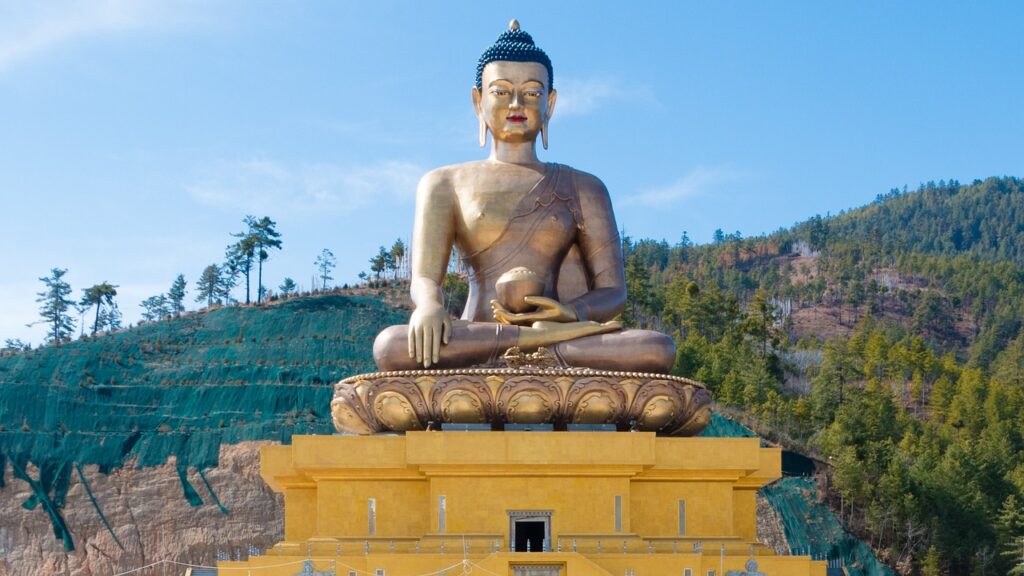
3. Punakha
Known for its stunning dzong located at the confluence of two rivers, Punakha offers picturesque landscapes and warm weather. Visitors can enjoy the Punakha Suspension Bridge and the Fertility Temple (Chimi Lhakhang). Here are some of the best places to visit in Punakha that should be included in your itinerary:
- Punakha Dzong
Built in 1637, this impressive fortress served as the capital of Bhutan until 1907. It is the second oldest and second largest dzong in Bhutan, located at the confluence of the Pho Chhu and Mo Chhu rivers.
- Chimi Lhakhang
A Buddhist monastery built in 1499, located on a hillock. It is known as the “Fertility Temple” and is an important pilgrimage site for childless couples.
- Khamsum Yulley Namgyal Chorten
A Buddhist stupa commissioned by the Queen Mother and completed in 2004. It is believed to ward off evil spirits and promote peace and harmony.
- Sangchhen Dorji Lhuendrup Nunnery
A temple complex located on a ridge overlooking the Punakha valley. It houses a school for Buddhist studies and a higher learning institute for nuns.
- Punakha Suspension Bridge
One of the longest suspension bridges in Bhutan, measuring around 160-180 meters in length. It offers stunning views of the Pho Chhu River.
4. Wangdue Phodrang
Here are some of the best places to visit in Wangdue Phodrang that should be included in your itinerary:
- Phobjikha Valley/Gangtey Valley
A glacial valley at 3,000 meters, is known as the winter home of the endangered black-necked cranes. It offers stunning natural beauty and a chance to see these rare birds.
- Gangtey Monastery (Gangtey Goempa)
The only Nyingmapa monastery in western Bhutan, dating back to the 17th century. It is situated on a hillock overlooking the Phobjikha Valley.
- Rinchengang Village
A village known for its skilled stone carvers, located just a few kilometers from Wangduephodrang Dzong.
- Wangduephodrang Dzong
An impressive fortress built in 1638, located on a hilltop at the confluence of the Punakha Chu and Tang Chu rivers. Wangdue Dzong was razed to the ground on 26 June 2012 due to a fire mishap. On the command of His Majesty King Jigme Khesar Namgyel Wangchuck, the dzong reconstruction started in January 2014. The historic Wangduephodrang Dzong, rebuilt to its former glory upon Royal Command, was consecrated on 11 November 2022.
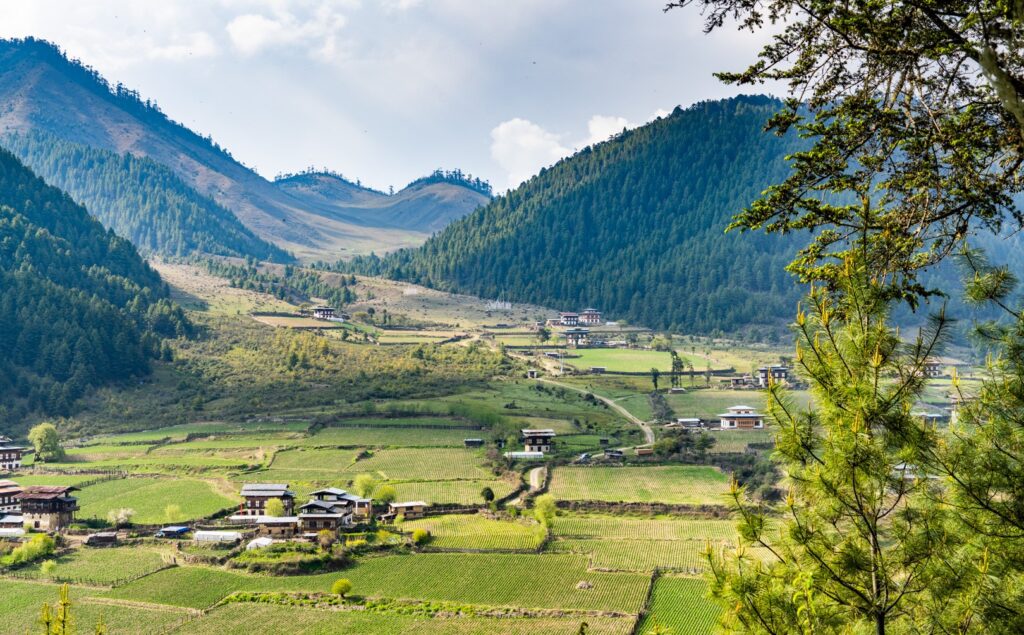
5. Haa Valley
Less frequented by tourists, Haa Valley offers a glimpse into traditional Bhutanese life, with beautiful landscapes and the opportunity for hiking and exploring local culture.
6. Bumthang
Known as the spiritual heart of Bhutan, Bumthang is home to several important monasteries and temples, including Jakar Dzong and Kurjey Lhakhang. The region is also famous for its apple orchards and traditional handicrafts.
What to pack for your Bhutan trip?
Remember to pack in layers, bring comfortable shoes, and dress modestly, especially when visiting religious sites. With the right preparation, you’ll be ready to fully immerse yourself in Bhutan’s stunning landscapes, rich culture, and warm hospitality.
Here are the essential items to pack for your trip to Bhutan:
Documents
- Passport with at least 6 months validity.
- Visa (arranged through your tour operator).
- Travel insurance documents are optional now.
- Passport-size photos for permits.
Clothing
- Moisture-wicking shirts and pants.
- Lightweight, waterproof jacket.
- Warm layers like sweaters and fleece for cool mornings and evenings.
- Comfortable, broken-in hiking boots or shoes.
- Warm socks, preferably wool.
- Modest clothing that covers knees and shoulders for visiting temples and monasteries.
- Scarf or shawl for additional coverage.
- Hat and sunglasses.
Gear
- Daypack or small backpack.
- Water bottle.
- Sunscreen and lip balm with SPF.
- Insect repellent.
- Flashlight or headlamp.
- Toilet paper and hand sanitizer.
- Basic first aid kit.
- Altitude sickness medication if visiting high elevations.
- Ginger chews for motion sickness on winding roads.
Electronics
- Camera and charger.
- Adapter and converter for Bhutanese outlets (Type D, G, and M plugs).
- Power bank.
- A portable water filter or purifier like a LifeStraw.
Other Items
- Cash in Bhutanese Ngultrum and US Dollars.
- Phrasebook or app for basic Dzongkha words.
- Snacks like dried fruits and nuts.
- Reusable water bottle.
- Hand warmers for winter travel.
- Bhutanese novel or reading material.
What kind of Bhutan Pilgrimage Package is available for planning a trip? And should you go for one?
Various travel packages for spiritual exploration and cultural immersion are available when planning a pilgrimage to Bhutan.
Should You Go for a Package? Yes! Opting for a travel package can be beneficial for several reasons:
- Ease of Planning: Packages often include accommodation, meals, and transportation, simplifying the travel experience.
- Local Expertise: Tour operators provide knowledgeable guides who can enhance your understanding of Bhutanese culture and spirituality.
- Access to Key Sites: Packages typically include entrance fees to major attractions and pilgrimage sites, which can be more convenient than arranging these individually.
- Cultural Immersion: Many packages include opportunities to participate in local festivals, rituals, and experiences that deepen your connection to Bhutanese culture.
- Safety and Support: Traveling with a group or guided tour can provide additional protection and support, especially in remote areas.
Do’s & Don’t – Travel Tips for Bhutan
By following do’s and don’ts, you can ensure a respectful and enriching experience while traveling in Bhutan, allowing you to appreciate its unique culture and stunning landscapes fully.
Here are some essential do’s and don’ts for traveling in Bhutan to ensure a respectful and enjoyable experience:
Do’s
1. Respect Local Customs and Traditions
- Always remove your shoes before entering temples, monasteries, and homes.
- Dress modestly, covering shoulders and knees, especially when visiting religious sites.
2. Learn Basic Phrases
- Familiarize yourself with a few phrases in Dzongkha, such as “Kuzuzangpo La” (hello) and “Kadrinche La” (thank you). This shows respect for the local culture.
3. Be Mindful of Altitude
- Acclimatize gradually to the high altitudes to avoid altitude sickness. Stay hydrated and take it easy during your first few days.
4. Try Local Cuisine
- Sample traditional dishes like ema datshi (chili and cheese) and momos (dumplings) to experience Bhutanese culture fully.
5. Practice Environmental Responsibility
- Bhutan is committed to environmental conservation. Avoid littering and use eco-friendly products.
6. Engage with Locals
- Show interest in local customs and traditions. Participate in festivals and rituals to deepen your cultural experience.
7. Use a Local SIM Card
- Purchase a local SIM card for better connectivity, especially if traveling to remote areas.
8. Follow Photography Etiquette
- Always ask for permission before taking photos of people, especially monks, and check if photography is allowed on religious sites.
Don’ts
1. Avoid Pointing
- Do not point at people or religious objects with your index finger; use your whole hand instead.
2. Do Not Touch Heads
- Avoid touching anyone on the head, as it is considered disrespectful in Bhutanese culture.
3. Refrain from Public Displays of Affection
- Public displays of affection are frowned upon in Bhutan, so maintain a respectful demeanor.
4. Do Not Disrespect Religious Symbols
- Be cautious around religious symbols and artifacts. Do not sit on altars or touch sacred items without permission.
5. Avoid Discussing Sensitive Topics
- Steer clear of discussions about politics, religion, or other sensitive topics that may be deemed inappropriate.
6. Do Not Expect Fast Internet
- Be prepared for limited internet connectivity, especially in rural areas. Enjoy the opportunity to disconnect and immerse yourself in the surroundings.
7. Avoid Littering
- Respect the pristine environment by not littering and following the “Leave No Trace” principle.
Did you like this post? If so, please subscribe to our latest updates for more!
